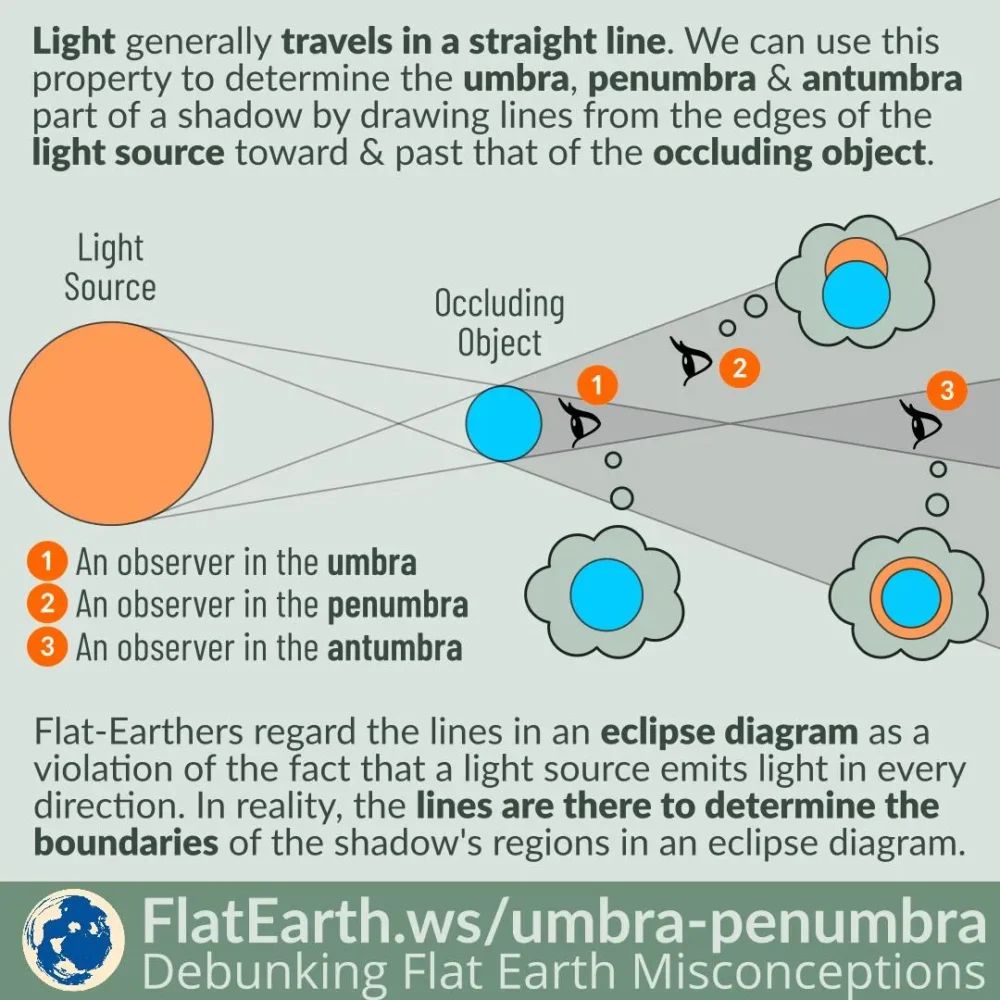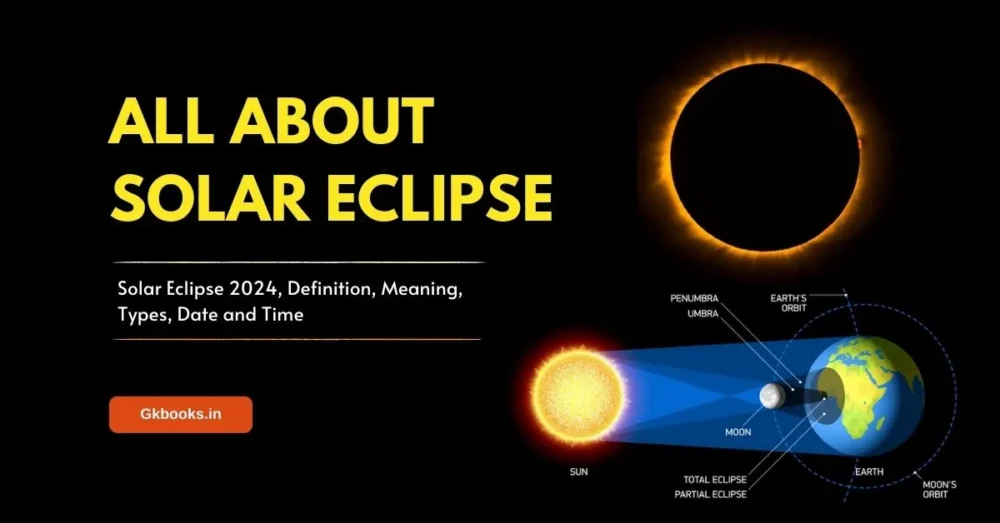The umbra, penumbra, and antumbra outline three unique segments of a shadow resulting from the interaction of a light source with an opaque object. Without diffraction, a focused beam like a point source only creates a central shadow called the umbra.
These terms are often used to describe shadows created by celestial bodies, and they are occasionally applied to describe variations in levels, as seen in phenomena like sunspots.

What is an Umbra?
The umbra, derived from the Latin word for “shadow,” constitutes the innermost and darkest region within a shadow, characterized by the complete obstruction of the light source by the occluding body.
✅ What is Occluding Body? 👉 An "occluding body" refers to an object or celestial body that blocks or obstructs the path of light, causing a shadow or casting shade on another object or surface. 👉 In the context of astronomy or celestial observations, this term is commonly used to describe an object, such as a planet or moon, that comes between a light source (like a star or the Sun) and an observer or another celestial body, leading to the casting of a shadow or an occultation event.
Understanding the Umbra
Imagine standing directly under a lamppost at night. That dark area beneath you where no light reaches is the umbra. It’s a cone-shaped shadow because the light spreads outwards from the lamp like a cone.
Now, if you stood right at the very tip of that cone, directly below the lamp, both the lamp and your head would appear the same size! This is because you’re looking straight up at the lamp and straight down at your head, so their sizes line up perfectly.
In simpler terms:
- Umbra = darkest part of the Shadow, no light gets there
- The Umbra is shaped like a cone
- If you’re at the tip of the cone, the object casting the shadow and your head appear the same size
Umbra Distances: Moon and Earth Comparison
The distance from the Moon to the apex of its umbra mirrors the span between the Moon and Earth: 384,402 km (238,856 mi).
Given Earth’s diameter is 3.7 times that of the Moon, its umbra extends proportionally further, covering an approximate distance of 1.4 million km (870,000 mi).
Don't Miss Out: Solar Eclipse 2024, Definition, Meaning, Types, Date and Time
Penumbra
The penumbra, originating from the Latin word “paene,” meaning “almost” or “nearly,” designates the area where only a fraction of the light source is concealed (hidden) by the obstructing body.
Within the penumbra, an observer witnesses a partial eclipse. Another perspective defines the penumbra as the domain where some or all of the light source is obscured, effectively categorizing the umbra as a subset of the penumbra.
Understanding Penumbra
Imagine a light shining on an object. The area directly behind the object where no light reaches is the umbra (the darkest shadow).
Surrounding the umbra is the penumbra (a fainter shadow). Here, some light still reaches the observer, but not all of it. It’s like standing under a tree with leaves – you’re not in complete darkness, but the sunlight is dappled and not as strong.
Think of the umbra as the bullseye in a dartboard and the penumbra as the rest of the target ring. The bullseye has no light, while the target ring gets some light, but not all of it.

Basically, the penumbra is a bigger, lighter shadow that includes the darker, no-light umbra.
Imagine you’re standing in the shadow of an object. According to NASA, if you’re in the dark part (umbra), you’re also in the lighter part (penumbra) at the same time.
Antumbra
The antumbra, derived from the Latin “ante,” meaning “before,” signifies the space where the occluding body is entirely encompassed within the disc of the light source.
Within the antumbra, an observer encounters an annular eclipse, characterized by the presence of a luminous ring encircling the eclipsing body. Should the observer approach the light source, the apparent size of the occluding body enlarges until it induces a complete umbra.
Understanding Antumbra
Imagine standing in the darkest part of a shadow, like behind a big rock during a sunset. If you look towards the light source (the sun in this case), you might see a bright ring around the object blocking the light (the rock). This ring is the edge of the sun peeking through.
Now, if you slowly walk closer to the light source, the object blocking the light (the rock) will seem to grow bigger in your vision. Eventually, it will completely block the light, and you’ll be standing in complete darkness, just like during a regular eclipse.
So, the key idea is that the distance between you and the light source determines what kind of eclipse you see. Farther away, you see a ring of light (annular eclipse). Closer, the blocking object covers everything (total eclipse).

The difference between Umbra, Penumbra and Antumbra
All three, umbra, penumbra, and antumbra, are parts of a shadow, but they differ in the amount of light they receive and their overall shape:
Umbra
- Darkness: The darkest part of the shadow, where no light from the source reaches. If you stood in an umbra, you’d be completely blocked from the light source.
- Shape: Cone-shaped, extending directly away from the object casting the shadow.
- Example: The dark center of your shadow is on the ground when you stand under a lamp.
Penumbra
- Partial light: Receives some, but not all, of the light from the source. You’d experience a partial dimming of the light source if you stood in a penumbra.
- Shape: Fades gradually around the umbra, creating a fuzzy outer edge.
- Example: The outer edges of your shadow on the ground, where the light gets dimmer the further you move away from the umbra.
Antumbra
- Limited light: Only exists when the light source is larger than the object casting the shadow. Receives some light from the edges of the source, but not the center. You’d see a ring of light around the object blocking the main source.
- Shape: Cone-shaped, starting where the umbra ends and widening as it goes further away.
- Example: During an annular solar eclipse, where the Moon is smaller than the Sun, you can see the Sun’s outer edge as a “ring of fire” around the Moon if you’re in the antumbra.
Key differences between Umbra, Penumbra, and Antumbra in a nutshell
| Feature | Umbra | Penumbra | Antumbra |
|---|---|---|---|
| Light | No light | Partial light | Cone-shaped, wider than the umbra |
| Shape | Cone-shaped | Fades gradually | Cone-shaped, wider than umbra |
| Example | Center of your shadow | Outer edges of your shadow | “Ring of fire” in annular solar eclipse |
Sources:
- Wikipedia (Major Source)
- flatearth.ws (For Image)
AI Content Disclosures:
- For the concepts of Umbra, Penumbra, and Antumbra, Google Gemini retrieved and presented relevant information from external sources. Additionally, Gemini explained the differences between these existing concepts based on its understanding of the information.
Explore Further: Related Gems










